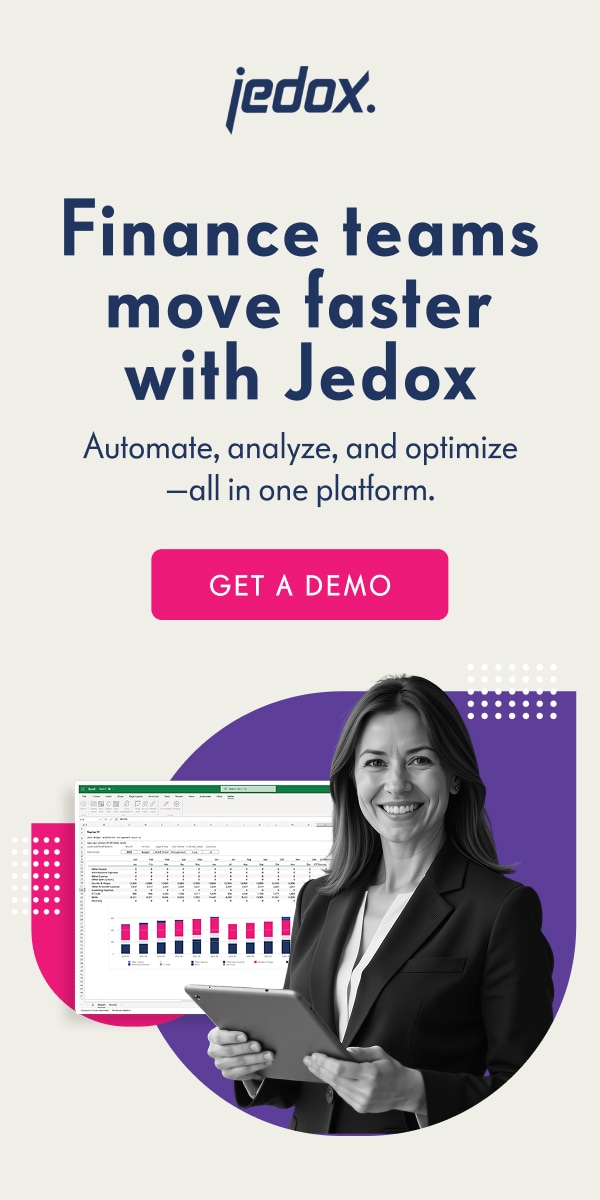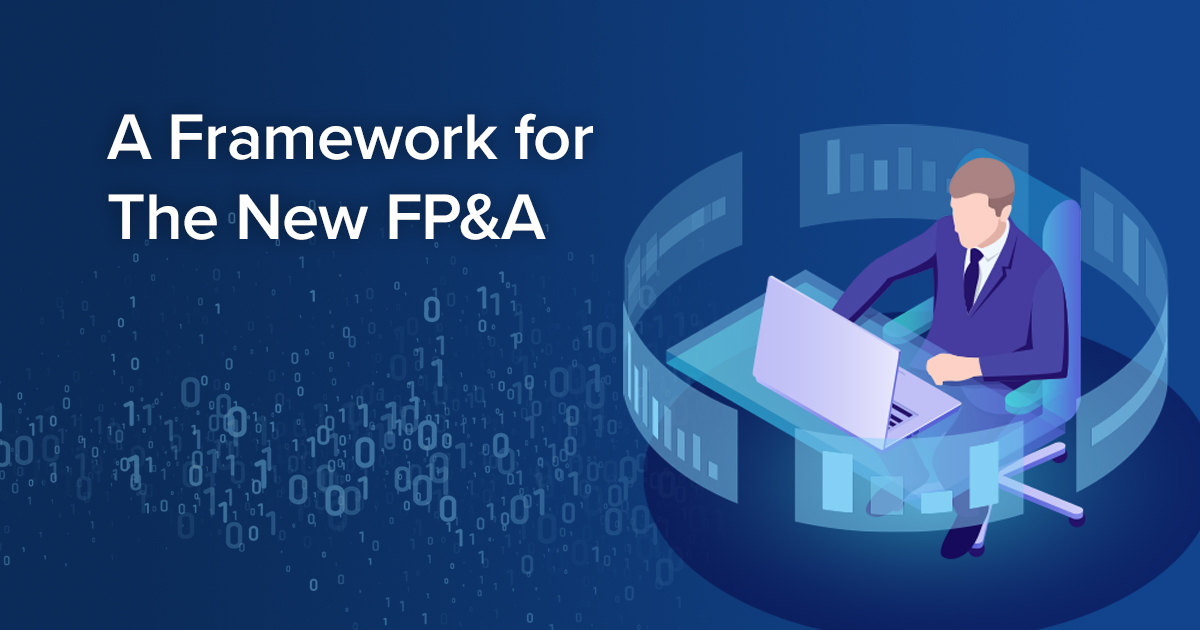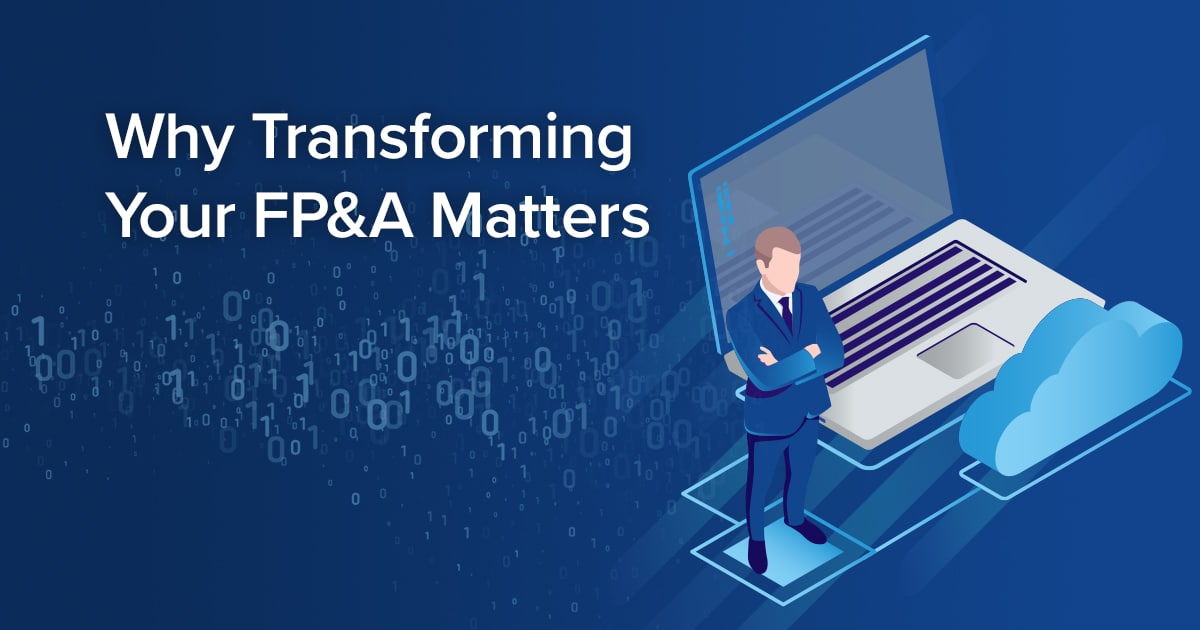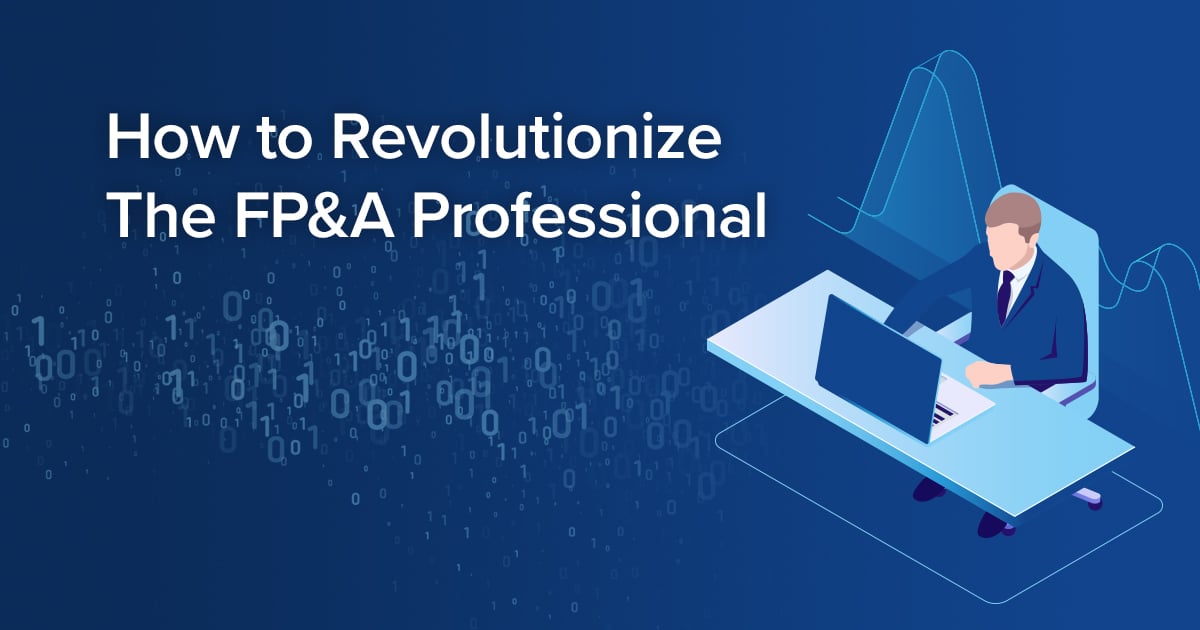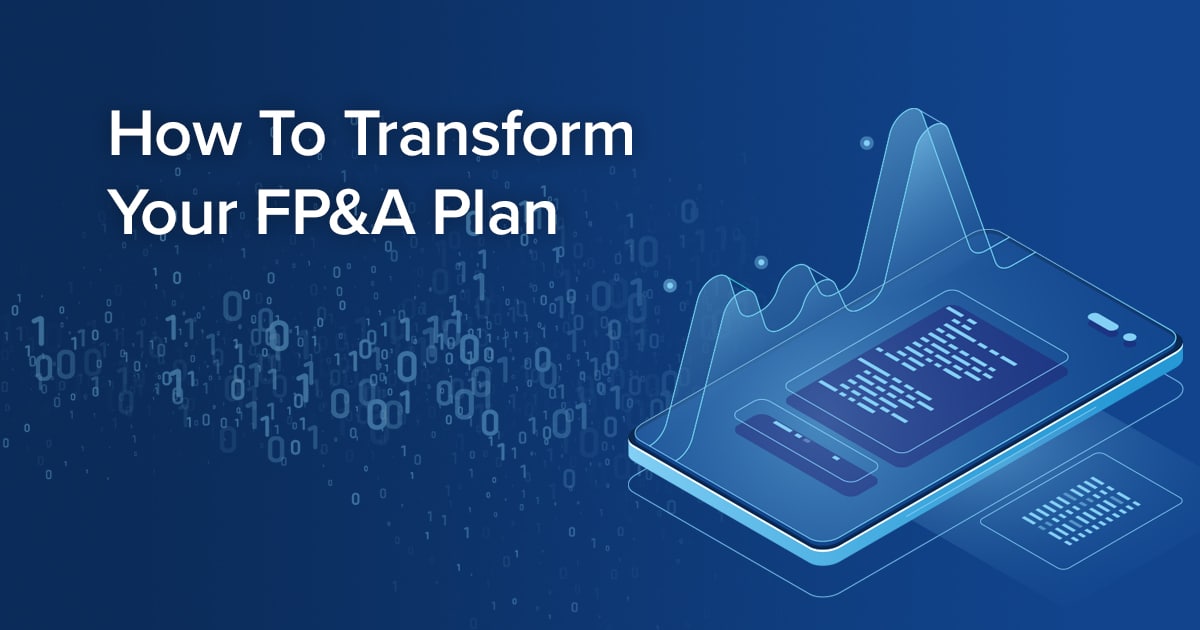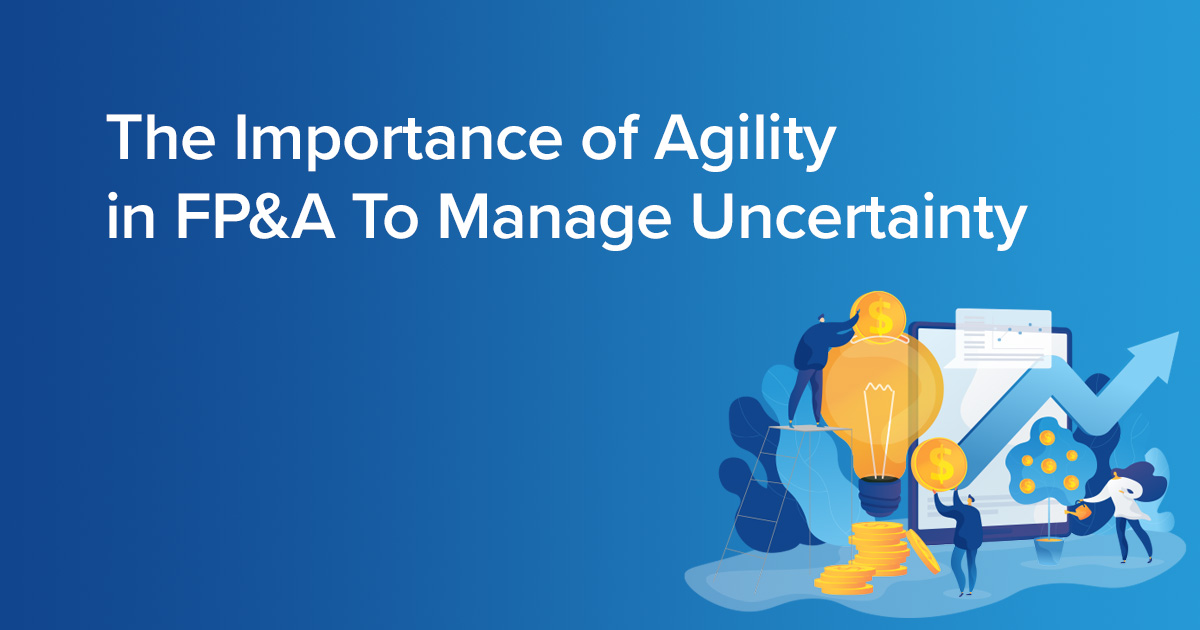
From cost center to value creator: How Finance business partnering drives real impact
What is business partnering, and why should every Finance professional take it seriously?
As someone who’s spent years at the intersection of Finance and strategy, I’ve seen firsthand how powerful it can be—when we stop focusing solely on control and compliance and start driving real business decisions.
Business partnering is the key. It’s how we unlock the strategic value of Finance and become integral players in a company’s success. In this article, I’ll share what Finance business partnering is, how it creates value, and what mindset shifts are required to make it happen.
Reframing the role of Finance
What’s the role of Finance in an organization? For many, it starts and ends with compliance and control. Keep the house in order, stay within budget, and make sure reports are accurate. And yes, that’s essential.
But there’s a deeper role—one that’s still underutilized: Finance as a strategic partner. I define this as Finance working side-by-side with Sales, Marketing, Operations, and others to help them achieve or exceed their targets.
This is the essence of Finance business partnering.
What business partnering really means
The concept of a “business partner” isn’t new. We’ve seen it in IT and HR planning for years. In Finance, it’s still gaining traction but it’s vital.
To me, business partnering means Finance stops merely reporting the numbers and starts using them to create real business value. That requires leadership, proactive thinking, and communication skills.
It’s a simple but powerful equation:
Insights are unique perspectives grounded in data that help others make better decisions.
Influence is our ability to build trust and communicate those insights effectively.
Impact is the measurable result: better decisions, stronger execution, and more value created.
- Business partnering = using insights to influence decisions and drive value
- Success happens when the business wins, stakeholders recognize our contribution, and we can articulate how we helped
- We don’t need all the answers. What matters is how we help others act on the right ones
What successful business partnering looks like
Many have asked me: How do I measure success in business partnering?
It’s a fair question, especially since we work collaboratively. But while your name may not be on every result, you can still track impact in meaningful ways. I use three core measures:
- Business performance: Is the company meeting or exceeding its goals?
- Recognition/satisfaction: Do business leaders credit you with helping? Do you have a strong Net Promoter Score?
- Articulated contribution: Can you explain what you did to support success?
Let me be clear: Finance doesn’t succeed in a vacuum. The company wasn’t created because of Finance. Finance was created because of the company. We only succeed when the business does. But if the business is succeeding without our input, we’re not doing enough.
That’s why I recommend surveying business leaders regularly. Ask how likely they are to recommend Finance to their peers. If the score is low, you’ve got work to do.
And finally, simply sending reports is not partnering. If you can’t explain how you helped turn insight into action, you’re not driving impact.
A real-life example: Saving $4M through collaboration
At this point, it’s clear what Finance business partnering isn’t. But here’s an example of what it is: I once worked as a Finance Manager at a U.S. drilling company. We had just signed contracts for two new-build rigs in the Gulf of Mexico—each with a $20M startup budget. But financial performance the year before had been poor, and corporate demanded a 10% cut.
We were stumped. Then, during a casual meeting, one of the ops managers asked, “What about that savings target? Should we have a workshop to figure this out?” That was my cue. I booked the session and set the agenda.
At the workshop, we split into teams, with each group including Finance colleagues. We brainstormed, tested ideas, and ultimately identified cost-saving measures that hit the $4M target.
What was Finance’s role? Facilitation, calculation, alignment, and accountability. Would it have happened without us? Maybe. But the point is, we were there. And we helped make it happen.
Developing a business partner mindset
In the situation I just described, success didn’t come from technical skills alone. It came from adopting the right mindset. If we want to move Finance from a cost center to a value driver, we must shift how we see ourselves and how others see us.
It is not easy, though. In fact, it’s challenging and will require you to make some changes. In simple terms, I like to say:
“Think like a profit driver, not a cost center.”
For years, many transformation efforts were judged by a single KPI: cost of Finance as a percentage of revenue. That drove outsourcing, automation, and a focus on being cheap. But it also damaged our brand.
- Finance must evolve from cost-conscious to value-focused
- This requires five core mindset shifts
- Anyone can make the shift, if they’re willing to change
The 5 mindset shifts
Changing one’s mindset means uprooting the most fundamental behaviors and beliefs around how the Finance function should operate. That’s tough, so we’ll keep the descriptions simple.
Here are the five shifts I believe every Finance professional must make:
- From minimizing cost to maximizing business value
- From reporting the past to improving the future
- From avoiding risk to enabling smart risk-taking
- From pushing data to shaping business decisions
- From individual achievement to enabling team success
When I look at how Finance teams spend their time today, the split is still wrong. Roughly speaking, Finance is spending 70% of its time on data, reports, and analysis and only 30% on sharing insights. That’s too much time on reporting, and not enough on influencing.
But this won’t change overnight. You’ll need to upgrade processes and technology, too. But the shift starts with you and it won’t happen inside your comfort zone.
Who can succeed as a business partner?
Many people assume you need to be an extrovert to succeed in business partnering. But in reality, it’s not about personality; it’s about mindset, emotional intelligence, and the ability to build trust. That’s especially true today, as the profession shifts. With automation handling more of the routine work, Finance is being valued less for technical execution and more for how we influence, communicate, and collaborate.
Influence—the second half of the “Insights × Influence = Impact” equation—is built on soft skills. Whether you thrive in large groups or prefer quiet 1:1s, what matters is your ability to connect with others, understand their goals, and communicate clearly.
If presenting isn’t your strength, use structure. The Pyramid Principle—starting with the main message, then the why, then the data—is a powerful way to bring clarity. If you’re not naturally outgoing, invest time in focused 1:1 conversations with key stakeholders. You’ll build credibility through consistency and insight.
You don’t need to be the loudest in the room. You need to be the most relevant, the most trusted, and the most aligned with the business. That’s what makes a great finance partner.
Why business partnering drives value creation
Every business partner initiative should start with the question: Why does this matter?
The answer is simple: better decisions lead to more business value. And Finance is uniquely positioned to see how every decision connects to shareholder value. We don’t just look at growth; we look at risk, capital, liquidity, and sustainability.
That’s the Finance “superpower”.
What value creation really means
So, what exactly do we mean when we talk about value creation?
Many equate it with just improving the bottom line. But as Finance professionals, we know there’s far more to the story. Value isn’t just about net income. It’s about sustainable performance across multiple dimensions—balance sheet strength, cash flow resilience, and the ability to manage risk over time.
For that reason, I use a broader, Finance-specific definition:
“Value creation is the discounted cash flows to equity owners.”
This definition acknowledges that a company’s ability to generate cash—not just profit—is what ultimately matters to shareholders. But even that needs to be made actionable. So, I break value creation down into 10 value drivers. These are the levers that, when pulled correctly, influence long-term equity value:
- Growth in revenue/turnover: Are we selling more, expanding our reach, or penetrating new markets?
- Growth in margins: Are we becoming more efficient or moving upmarket with pricing?
- Tax: Are we managing our tax position responsibly and effectively?
- Net working capital: Are we optimizing cash tied up in operations (e.g., receivables, payables, inventory)?
- Fixed assets: Are we deploying capital in a way that supports strategy while minimizing waste?
- Net interest rate: Are we managing debt and capital structure to optimize cost?
- Net interest-bearing debt: Are we ensuring financial stability without over-leveraging?
- Operating risk: Are we identifying and mitigating disruptions in core activities?
- Liquidity risk: Are we maintaining sufficient buffers to weather unexpected downturns?
- Financial risk: Are we safeguarding against volatility in currencies, commodities, or capital markets?
Each of these drivers exists in every organization, though the level of emphasis may vary. Some functions might focus more on specific drivers, but Finance is uniquely positioned to view—and influence—the whole picture.
As a Finance business partner, my goal is to ask myself constantly: Am I contributing to moving the needle on one or more of these drivers? If not, then I might be spending my time on work that, while useful, isn’t creating real value.
How do you know if you’re creating value?
One of the most common questions I hear from aspiring business partners is: How do I know if I’m making a difference?
I get it. Business partnering is a collaborative sport. You’re rarely acting alone. It’s not always easy to prove your specific role in a win. But there are practical ways to assess and demonstrate your impact:
- Improved business outcomes: Are the areas you support consistently delivering better results?
- Acknowledgement from stakeholders: Do business leaders explicitly recognize your contribution?
- Evidence of change: Have your insights or interventions led to visible shifts in decisions, behaviors, or financial performance?
The best business partners keep track of all three. Not as a vanity metric but to stay grounded in purpose and results.
One powerful tool I’ve seen work well is the value log. At a global pharmaceutical company I supported, Finance set an annual target of $150M in documented value contributions. Everyone in the function was encouraged to log specific actions or initiatives where they believed they had influenced business performance.
This wasn’t about taking credit. It was about building a mindset of accountability and active contribution. When Finance sees itself as part of the engine that drives results—not just the mirror that reflects them—it changes the entire dynamic.
You don’t need to wait for your company to roll out a formal system. You can start a simple spreadsheet or journal to track the projects you’re involved in, what value drivers they touch, and what the business outcomes were. Over time, you’ll build a clear picture of how you’re creating value and where to focus your efforts for even greater impact.
Looking back: Have you made an impact?
As you reflect on your work over the past year, ask yourself a few tough but essential questions:
- Did I help improve any major business decisions? Not just validate them but shape them from the outset?
- Was I invited to the table early? Or was I brought in at the last minute to “run the numbers”?
- Did my stakeholders feel supported and enabled by Finance? Or did they see us as a barrier?
These questions are not just for self-assessment; they’re also a roadmap for where to go next.
If you’ve had a hand in even one major decision that led to measurable improvement, you’ve already made an impact. The goal is to make this the norm, not the exception.
Final thoughts: Business partnering is for everyone
I’ll leave you with this: Business partnering isn’t a role—it’s a mindset and a way of working. Whether you’re an introvert who thrives on deep analysis or an extrovert who builds relationships with ease, you have a place in this movement.
Yes, extroverts may find it easier to step into the spotlight, lead conversations, and be visible partners. But introverts often bring the quiet discipline, sharp thinking, and structured communication that are equally critical.
When these strengths come together—within a person or across a team—that’s when Finance becomes a true force for impact.
My challenge to you is this: Start by shifting your mindset. Recognize that you’re not just reporting numbers; you’re in a position to shape the future of your business. You’re a value creator.
Whether you’ve already begun the journey or are just starting out, now is the time to act. Are you ready to become a business partner who drives impact?
What is Finance business partnering, in simple terms?
Finance business partnering is about using the insights we have in Finance to influence better business decisions and ultimately drive value creation. It’s no longer enough to report on what’s already happened. Instead, we must work closely with business leaders to help shape what happens next. That means being part of the conversation, offering timely insights, and making sure our input actually leads to improved results.
How do I know if I’m doing “real” business partnering?
You know you're doing real business partnering when your involvement leads to tangible improvements in business performance. If the company is meeting or beating its goals, your stakeholders recognize your contributions, and you can clearly describe how your work helped them succeed, you’re on the right track. If, on the other hand, your main activity is sending reports and your business leaders barely acknowledge your role, then you’ve still got work to do to become a true partner.
What mindset shifts are necessary to become a business partner?
To become a business partner, you need to shift away from the traditional view of Finance as a cost control function. You have to start seeing Finance as a value creation driver—one that helps improve future performance, supports smart risk-taking, and enables business success. It also means stepping away from the idea that success is about working in isolation. Instead, it’s about enabling others and making sure the broader business benefits from your insights and guidance.
How do I measure the value I’m creating as a business partner?
Value can be measured in more ways than just financial results. Of course, improved performance is one sign that you’re having an impact. But you should also pay attention to whether your business stakeholders recognize the role you’ve played in getting there. Can they point to something specific you did that helped? Have your insights changed how they operate or make decisions? If the answer is yes, then you're clearly creating value. Some organizations even use a “value log” to document this impact—which I think is a great habit to adopt.
What are the main value drivers I should focus on as a business partner?
Value creation isn’t just about increasing profits. It includes everything from revenue growth and margin improvement to managing risk, optimizing capital, and improving cash flow. These drivers exist in every business, and as Finance professionals, we’re uniquely equipped to understand how they interact. The more your work helps improve one or more of these areas, the more impact you’re having. If your daily tasks don’t connect to value drivers, it might be time to rethink where you’re focusing your energy.
What’s one thing I can do today to start becoming a business partner?
If you want to start today, begin by changing how you see yourself. Stop thinking like a cost controller and start thinking like a value creator. One practical step is to reach out to a business leader you support and schedule a conversation. Ask about their top priorities, their current challenges, and how Finance could better support them. It doesn’t have to be complicated, but that single action can set the stage for a more collaborative and impactful relationship.



